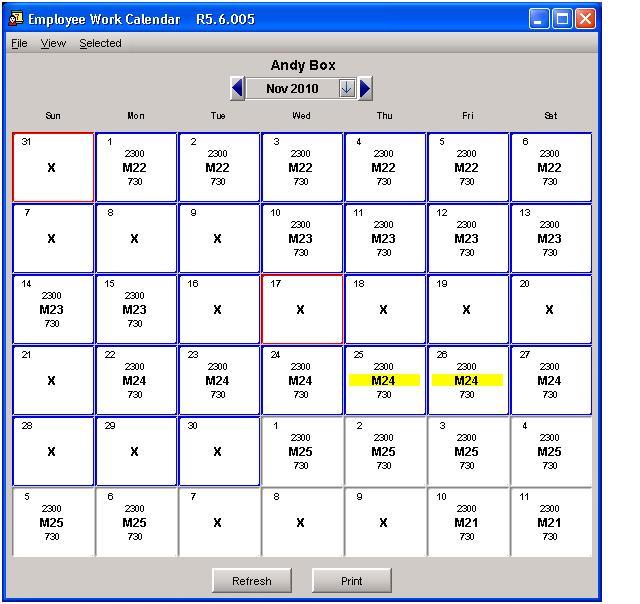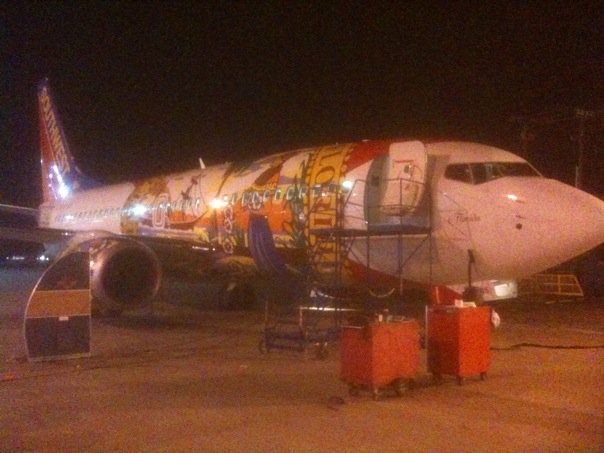As I mentioned last week, Jenny and I got the chance to go to Seattle with several coworkers and leaders to pick up a new 737-700 and bring it back to Dallas. It was a wonderful experience that we might never get to repeat, and I’m so thankful I got to go and share it with Jenny and my great coworkers.
The pictures tell much of the story, but here are a few more details. We arrived in SEA a bit early, checked in at the hotel, and hung out with our crew at a nice reception where I got to visit with several people I don’t normally see much due to our conflicting schedules. At the reception, they raffled off a few prizes. The Boxes won not once but twice: a beautiful model 787-8 for me, and a seat in the cockpit for takeoff for Jenny.
Friday morning, Boeing treated us to a huge breakfast buffet before we hit the Boeing Store to buy some souvenirs: a couple of toys for the boys, a t-shirt for Jenny, and – of course – a model plane for me, this one a 777-300ER. All the guests got to listen in on the FAA conference call during which Boeing transfers the aircraft title to us. Apparently the payment is handled separately. My friend Kevin got to sign for acceptance of the aircraft, apparently the first time in SWA history a non-pilot was given that honor. The Boeing official joked that Kevin’s credit wasn’t quite good enough to finance the plane, so they had to make other arrangements.
Our new aircraft had a couple of minor mechanical issues that needed to be fixed. Boeing officials were very apologetic and tried to make it up to us by giving us free admission to the world-class Museum of Flight, which I was thrilled to visit again. Then they provided lunch at the delivery center while they finished getting the plane ready.
The trip as planned would have been fantastic, but God and Boeing threw in a bonus that made it even sweeter. Three of the 787 test aircraft were at BFI that day sharing the ramp with SWA’s new 737. Two of them were easily visible from the delivery center, and one even made a couple of testhops while we were there. I got to see both takeoffs. It’s a very smooth and surprisingly quiet aircraft. I ate lunch while gazing out the window at one of the test planes and drooling.
Finally our aircraft was ready, N949WN. She was GORGEOUS, and the clouds had burned off to bathe her in bright sunshine. We all took lots of pictures, of course. Just like with a new car, a new aircraft really does have new-plane smell. In our case, it was rich leather. Boeing gave each of us a nice goodie bag with a 737 hat, a Boeing glass, and some chocolates that we were afraid to open in the plane lest we foul it.
We departed around 3pm local time with Jenny and one of the interns in the cockpit having the ride of their lives. Afterward, they found regular seats and let others have the chance to sit in the cockpit. Since this wasn’t a commercial flight, the normal rules about access to the cockpit didn’t apply. She said sitting up front for takeoff was a huge thrill. They departed facing Mount Rainier and got a nice view during climbout. The rest of the flight was nice and smooth. We did our best not to spill anything on the pristine interior while we enjoyed the free ice cream that Boeing provided for the trip home. Upon landing, we parked at the maintenance hanger so our mechanics could check it out. I believe N949WN entered revenue service on Sunday. I hope the passengers enjoy this aircraft as much as we did!
Here are some pictures:


